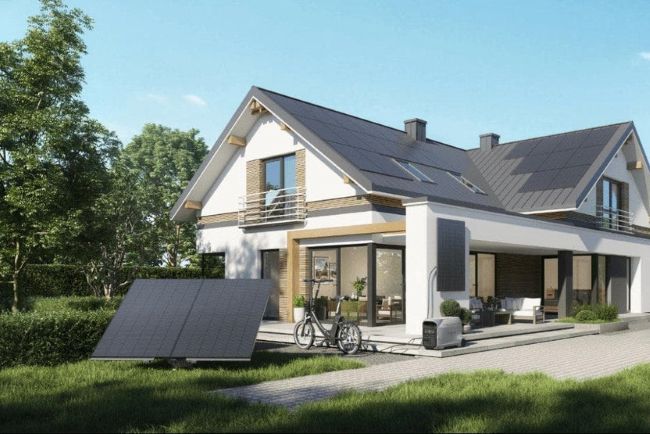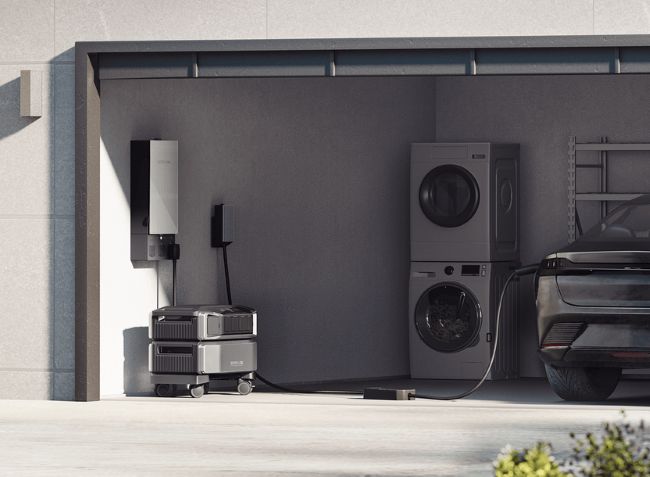Home Solar Systems for Sustainable Energy Efficiency
With rising power prices and climate change, homeowners are under increasing pressure to look for a more sustainable solution to their power needs. Home solar systems become a game changer and now provide environmental stewardship and energy freedom. Not only do these systems decrease your carbon footprint, but they also produce consistent power that can greatly reduce or eliminate your monthly utility bills. Though installation potholes and a system’s ability to work effectively still worry consumers, solar technology has been shaped up to face such concerns head-on. Enterprises such as EcoFlow have transformed the adoption of home solar through cutting-edge innovations in product offerings which streamline installation and increase energy conversion efficiency. These next-generation products illustrate how home solar power has evolved from being a complicated, niche solution into something that is now a simple, practical, no-brainer for sustainable living and has made it easier than ever for homeowners to take power into their own hands.
Why Home Solar Systems Are Essential for Carbon Reduction
Home solar systems are a key advancement in the climate change battle and provide proven climate solutions that answer the need for reduced emissions. By contrast, fossil fuels like coal and gasoline dredge up carbon that has collected over millions of years and release it into the atmosphere when burned; solar panels convert sunlight to electricity with no emissions. The typical home solar installation can reduce carbon dioxide emissions by 5-7 metric tons a year (roughly the equivalent of a car).

And if you compare real-world data, whole lifecycle solar systems, from cradle to putting them up and generating power, have a remarkably short carbon payback time. Most systems repay their manufacturing emissions within 2-3 years and thereafter produce completely clean energy for decades. Today, solar panels last around 25 to 30 years and leave a huge dent on the environment as a result of their longevity.
Net Metering and Its Environmental Benefits Through grid-connected solar homes, we receive even more environmental benefits. At the same time of year on the hottest days, the system actually winds up feeding electricity back into the grid when nobody is home so as not to heat up the house. A case study of a California suburb has also shown that solar can protect homes from the climate crisis: homes with solar collectively mitigated over 1,000 metric tons of carbon dioxide emissions in a single year—the same as if 16,500 trees had been planted. These actual reductions illustrate the power of individual homeowners to contribute to global carbon reduction through solar adoption.
Maximizing Energy Efficiency with Solar Technology
Modern photovoltaic cells have transformed the landscape of solar energy harvesting, reaching conversion efficiencies over 20% by employing advanced semiconductor materials and multi-junction concepts. These state-of-the-art panels integrate with advanced battery storage, using lithium iron phosphate technology, to allow customers to store surplus energy captured during daylight and releasing that at night.

Smart monitoring solutions observe production profiles, meteorological conditions, and consumption routines during the operation and adapt the power delivery automatically to best suit these factors.
Solar goes gangbusters when paired with whole home energy retrofits. Walls and attics with improved insulation will cut heating and cooling needs as much as 15%, and ENERGY STAR appliances will nearly eliminate base power consumption. Smart thermostats and LED lighting add even more synergy to solar when it comes to lowering overall energy needs. This ‘whole system’ approach results in a multiplier effect, where each spread improvement multiplies the effect of the solar.
Solar investment yields attractive returns over the long haul, financial analysts say. And with system costs falling by 60% on average in just 10 years, a majority of homeowners break even within five to eight years. Taking into account the increasing cost of utilities, tax credits, and minimal maintenance expenses, solar panels usually supply $20,000 to $30,000 in net savings over their lifespan. The payback is even more rapid with solar incentives for new solar panel installations where you have high electric rates or favorable solar incentives, encouraging a solar power installation investment for environmentally friendly folks.
Installation & Maintenance Simplified: Step-by-Step Guide
Pre-Installation Preparation
Before installation, start with a thorough site assessment, including structural and geographical considerations of the roof. The best orientation is south and surfaces at those angles see the best sun exposure. Measure space available, accounting for space setbacks from edges and venting, and you’ll need a rooftop of about 100 square feet per 1kW of system. Check the local building codes and the HOA guidelines and pull any required permits from your city. Electrical permits and structural engineering are required in most areas and usually take 2-4 weeks.

Plug-and-Play Installation Process
Start out by doing a parts check and making sure you have all of the components in your installation kit. Place the mounting rails based on your roof plan and attach them to structural rafters with the pre-drilled mounting holes. Attach the microinverter-integrated panels to the rails with the tool-less locking system until you get that click for secure attachment. For the power hub, place it indoors, ideally near the main electrical panel. The panel layout is directed by the mobile app using augmented reality markers to ensure an optimal configuration of the arrays. Finish installation by wiring the main power cable to your building’s electrical system with the pre-installed safety disconnect switch.
Effortless Maintenance Protocols
The self-cleaning structure, driven by electrostatic repulsion, repels dust accumulation from the system and minimizes the need for manual cleaning to annual inspections. Conduct quarterly performance testing via the diagnostic tools on the mobile app, which will examine production integrity and identify problems before they cause inefficiency. Common issues can usually be resolved through remote reconfiguration by the app’s AI troubleshooter whenever problems occur. For complicated issues, trained technicians can typically analyze and correct systems remotely, reducing service calls and maintenance expenses.

Embracing a Sustainable Energy Future
The move to home solar arrays is a game-changing transformation in how we power our homes and safeguard the future of the planet. Contemporary solar, also available in plug and play, initially eliminates classic obstacles in the face of high energy yield and environmental effect. With powered-up photovoltaic cells, intelligent energy management systems, and automatic maintenance, people are finally on the path to energy self-sufficiency. Through these sustainable alternatives, every little household can do their bit to not only drastically lower their carbon footprint but also reap huge cost savings over time. The best time to go solar is today—that way you can see exactly how much you can impact the planet with solar for your home when using assessment tools that are easily accessed online. Individually, our decision to solarize places us a powerful step closer to a healthier environment and a more secure energy future for our kids and grandkids.



